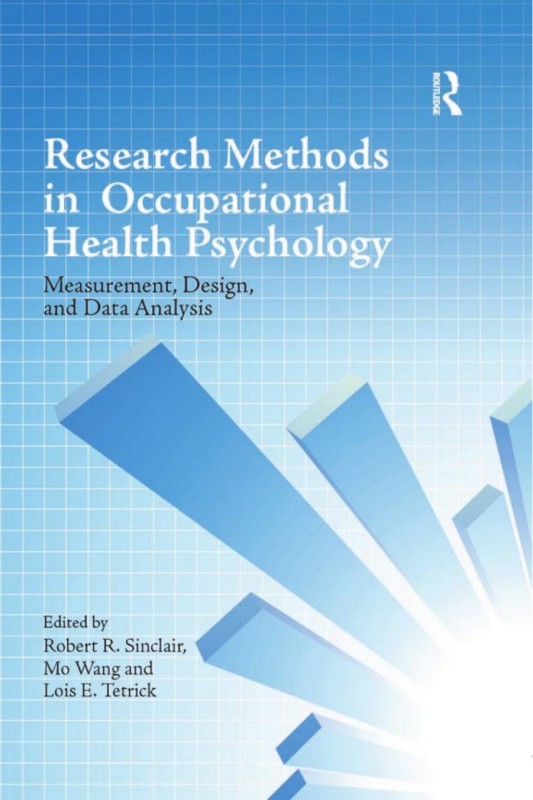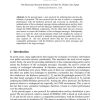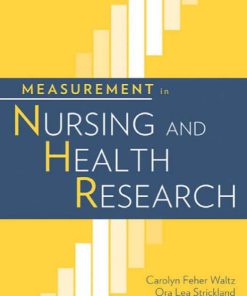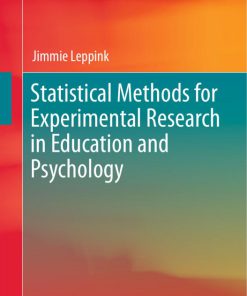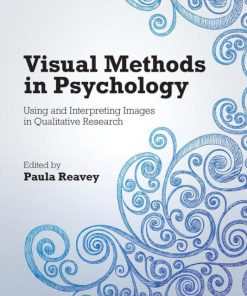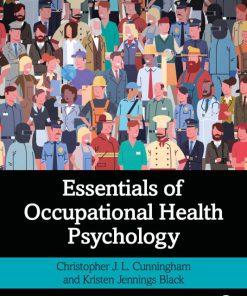Research Methods in Occupational Health Psychology Measurement Design and Data Analysis 1st Edition by Robert Sinclair, Mo Wang, Lois Tetrick 0415879329 9780415879323
$50.00 Original price was: $50.00.$25.00Current price is: $25.00.
Authors:Robert R. Sinclair , Series:Psychology [153] , Tags:Psychology / Assessment; Testing & Measurement Psychology / General Psychology / Industrial & Organizational Psychology , Author sort:Sinclair, Robert R. , Languages:Languages:eng , Published:Published:Aug 2012 , Publisher:Rouledge , Comments:
Research Methods in Occupational Health Psychology Measurement Design and Data Analysis 1st Edition by Robert Sinclair, Mo Wang, Lois Tetrick – Ebook PDF Instant Download/Delivery. 0415879329, 9780415879323
Full download Research Methods in Occupational Health Psychology Measurement Design and Data Analysis 1st Edition after payment
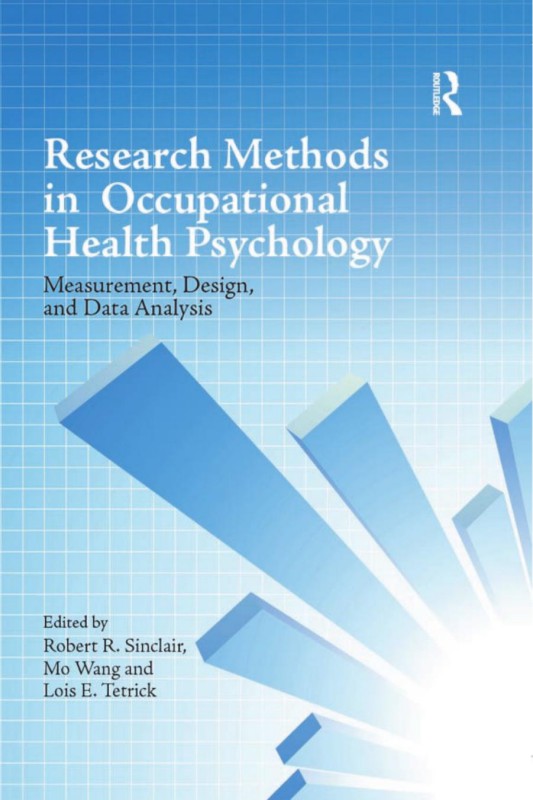
Product details:
ISBN 10: 0415879329
ISBN 13: 9780415879323
Author: Robert R Sinclair, Mo Wang, Lois E Tetrick
Research Methods in Occupational Health Psychology: Measurement, Design, and Data Analysis provides a state-of-the-art review of current issues and best practices in the science of Occupational Health Psychology. Occupational Health Psychology (OHP) is a multidisciplinary and rapidly growing area of research and it is difficult or impossible for researchers to keep up with developments in all of the fields where scholars conduct OHP science. This book will help OHP scholars improve their own research by translating recent innovations in methodology into sets of concrete recommendations that will help scholars improve their own research as well as their training of future researchers.
Research Methods in Occupational Health Psychology Measurement Design and Data Analysis 1st Table of contents:
Part I Measurement
1 Measurement of Immune System Functioning
Immune System Functioning and Occupational Health Psychology
Mind-Body Connections
The Role and Structure of the Immune System
Mechanical Barrier
Chemical Barrier
The Innate Immune System
Cellular Barriers
Adaptive Immune System
Inflammation
Assessment of Humoral and Cellular Immune Reactions
Enumerative Immune Assays
Functional Immune Assays
Neuroendocrine Markers
Cortisol
Catecholamines
Dehydroepiandrosterone
Considerations in the Selection of Immune System Markers
Saliva or Blood
Conclusion
References
2 Measurement of Musculoskeletal Functioning
Disability and Function
Why Quantify Function?
Quantification Testing Criteria
Functional Capacity Testing in the Lumbar Spine
Functional Capacity Evaluation (FCE)
International Classification of Functioning (ICF)
Summary and Conclusions
References
3 Measurement Issues in Work-Family Research1
Work-Family Conflict
The Positive Relationship between Family and Work
On Response Scales
Summary and Concluding Comments
References
4 Measurement of Sleep and Sleepiness
Circadian Rhythms, Sleep, and Shift Work
Measuring Sleep and Sleep Loss
Best Practices
Measuring Circadian Rhythms
Best Practices
Measuring Sleepiness
Best Practices
Methodological Issues with Simulated Shift Work
Summary and Conclusion
Best Practices
References
5 Measurement of Emotions
General Issues and Considerations
Emotions and Related Terms and Phenomena
Aspects of Emotional Responding
Dimensional versus Categorical Perspectives on Emotions
Self-Report Measures
Types of Self-Report Measures
Advantages of Self-Reports
Disadvantages of Self-Reports
Observational Measures
Behavioral Observation
Facial Behavior
Narrative Accounts
Advantages of Observational Measures
Disadvantages of Observational Measures
Psychophysiological Measures
Measures of Autonomic Nervous System Functioning
Measures of Central Nervous System Functioning
Advantages of Psychophysiological Measures
Disadvantages of Psychophysiological Measures
Summary and Conclusions
References
6 How to Think About and Measure Psychological Well-Being
Eight Issues in the Measurement of Well-being
Issue 1: Psychological, Physiological, or Social Emphasis
Issue 2: State or Trait Well-Being
Issue 3: The Scope of Measurement
Issue 4: Positive or Negative Emphasis
Issue 5: Affective Well-Being and Cognitive-Affective Syndromes
Issue 6: Measuring Affective Well-Being
Issue 7: Measuring Syndrome Well-being
Issue 8: Examining Ambivalence
Content Validation and Related Concepts
References
7 Measurement of Interpersonal Mistreatment in Organizations
Specific Instruments for Assessing Workplace Mistreatment
Aggression
Bullying
Incivility
Miscellaneous Constructs
Types of Research Questions Addressed with These Instruments
Issues to Consider When Using These Instruments
Conclusion
References
8 The Measurement of Depression and Anxiety in Occupational Health Psychology
Depression and Anxiety across Cultures
Measuring Stress, Burnout, Depression, and Anxiety: What’s the Differenceż
Assessment of Functioning in Clinical and Organizational Populations
Defining Anxiety and Depression
Methods of Measurement
Issues in Measurement Practice
Sensitivity and Specificity
Problems with Measurement Over Time
References
9 Measurement of Posttraumatic Stress Disorder in an Occupational Health Context1
Common Research Questions
Measurement: Assessing Symptoms and Occupational Health Interventions
Assessment Methods
Structured Diagnostic Interviews
Self-Report Measures
Occupationally Related PTSD
References
10 The Measurement of Work Engagement
Introduction
What is Work Engagementż
Engagement in Business
Engagement in Academia
A Model of Work Engagement
How is Work Engagement Measuredż
The Gallop Q12
The Utrecht Work Engagement Scale (UWES)
Questionnaires with Limited Application
How Is Work Engagement Related to Workaholism and Job Burnout?
What about the Practical Use of Engagement Questionnaires?
Conclusion
References
Part II Design and Analysis
11 Cognitive Assessment Implications for Occupational Health Psychology
Assessment of Cognitive Performance
Working Memory, Attention, and Executive Control
Test Batteries for Cognitive Assessment
Transient Stress and Fatigue Factors
A Multivariate Model For Stress and Fatigue States
Subjective States and Cognitive Functioning at Work
Psychophysiological Assessments of Cognition
Workload Monitoring
EEG Methods
Transcranial Doppler Sonography
Conclusions
Disclosure
References
12 Experimental and Quasi-Experimental Designs in Occupational Health Psychology1
Survey of Experimental Studies in OHP Literature
Basic Components of Experiments
Variables of Interest
Control
Measurement
Experimental Designs
One-Group Design.
Treatment-Control Posttest Design
Factorial Design
Pretest-Posttest Control Group Design
Solomon Four-Group Design
Time Series Design
Conclusion
References
13 Event-Sampling Methods in Occupational Health Psychology
Core Features and Types of ESM Studies
Research Questions Answered by ESM Studies
Modeling Within-Person Processes
Modeling the Time Course
Aggregating Data over Time
Relevance of ESM Studies for Advancing Theories in OHP
Within-Person Processes
Time-Related Processes
How to Conduct an ESM Study in OHP
Sample Size
Questionnaire Design and Measures
Devices
Data Analysis
Specific Challenges of ESM Studies
Conclusion
References
14 Sampling in Occupational Health Psychology An Epidemiological Perspective
Basic Concepts
Sampling Design
Probability Sampling
Random Sampling
Stratified Random Sampling
Cluster Sampling
Nonprobability Sampling
Quota Sampling
Convenience Sampling
Respondent Driven Sampling
Sampling Issues and Occupational Health Psychology
References
15 Quantitative Self-Report Methods in Occupational Health Psychology Research
Why Are Self-Reports Used?
Concerns in the Use of Self-Reports
Convergence of Self-Reports with Other Measures
Bias and Confounding of Self-Report Measures
How Best to Use Self-Reports
Keep in Mind What Self-Reports Represent
Do Not Use Self-Reports Alone
Incorporate Time into Research Designs
Rule Out Feasible Alternatives
Concluding Thoughts
References
16 Strengths and Limitations of Qualitative Approaches to Research in Occupational Health Psychology1
Strengths
Item Development
Theory Development and Hypothesis Generation
Discovery
Interpreting Findings
Insight into the Success or Failure of Interventions
Dependability of Workers’ Own Reports on Their Work Roles
Rich Description
Limitations1
Reactivity
Overidentifying with Study Participants
Theoretically Important Categories Emerging Naturally from Qualitative Data
Testing Causal Hypotheses
Baconian Character
Future Directions
Final Observations
References
17 Use of Archival Data in Occupational Health Psychology Research1
Types of Archival Data
Social Science Data Archives
Public Documents, Data Sets, or Official Records
Private Documents or Records
Mass Media
Physical, Nonverbal Materials
Unique Opportunities Afforded by Using Archival Data
Available Data
Data with Specific Research Designs or Methodology
Population/Subpopulation Representative
Access to Special Populations
Broader Scope of Variables
Objective Rather Than Subjective Data
Suitable for Student Research Projects
Challenges to Using Archival Data
Ethical Issues
Large, Complex Databases
Complex Sample Survey Designs and Need for Sample Weights
Lack of Desirable Measurement Properties
Lack of a Theoretical Framework
Missing Data
Objective Rather Than Subjective Measures
“Old” Data
Lack of Suitability for Student Research Projects
Focusing on the Research of Interest
Archival Data Resources for Occupational Health Researchers
Concluding Comments
References
18 An Overview of Multilevel Modeling in Occupational Health Psychology
Conceptual Issues
Group Membership Issues and Nesting Terminology
Is Multilevel Modeling Necessary?
Multilevel Construct Conceptualization and Measurement
Different Types of Multilevel Models
Data Analysis
Translating the Conceptual Model to Equations
Preparing the Data
Running the Analyses
Interpreting Output
Estimating Variance Explained/Effect Sizes
Graphing Significant Interactions
Advanced Multilevel Modeling Issues
Modeling More Than Two Levels
Noncontinuous Outcome Variables
Multilevel Mediation
Power Analysis
Conclusion
References
19 Person-Centered Analysis Methods, Applications, and Implications for Occupational Health Psychology
Person-Centered Analytical Methods
Latent Profile Analysis and Latent Class Analysis
Growth Mixture Modeling
Mixture Latent Markov Modeling
Issues and Decisions in Person Centered Research: Commitment Profiles as an Exemplar
What Variables Should Be Used to Form the Profiles?
What Hypothesized Profiles Best Capture the Variables Chosen?
Why Might Some Profiles Not Be Observed?
How Do Definitions of High and Low Scores Affect Profile Interpretation?
Hypothesizing Differences between Profiles on Other Variables
Other Interesting Questions and Directions
Summary and Conclusions
References
20 Longitudinal Research and Data Analysis
Defining Longitudinal Research
The Focus of Longitudinal Research
What Longitudinal Research Can Tell Us: Questions and Analysis
Descriptive Longitudinal Techniques
Explanatory Longitudinal Techniques
Modeling Discrete Events Over Time
Conclusion
References
21 Looking Toward the Future of OHP Research
In Order to Progress as a Scientific Discipline, OHP Researchers Need to …
Talk about Our Values
Find a Cure for Terminological Diversity
Understand the Role of Time
Develop (and Use) Norms for Measures
Clarify Some External Validity Related Issues
Apply Dynamical Systems to OHP Research
Conclusion
People also search for Research Methods in Occupational Health Psychology Measurement Design and Data Analysis 1st:
health psychology research methods
3 types of research in psychology
qualitative study occupational therapy
qualitative research methods in healthcare
You may also like…
eBook PDF
Measurement in Nursing and Health Research Fourth Edition by Carolyn Waltz 9780826105080 0826105084

